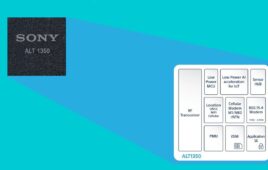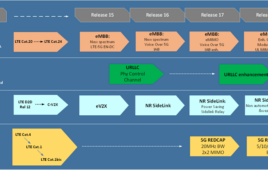This week, we were treated to an iPhone sandwich, with AT&T reporting its better than expected results in its first (partial) quarter without iPhone exclusivity and Verizon Wireless revealing it activated 2.2 million iPhone 4s in about eight weeks of offering it. In between, Apple reported another astonishing iPhone-heavy quarter, with great demand for the iPad 2.
Just for good measure, let’s make it a double-decker, with Nokiain there as well, vowing to (finally) make some more significant changes to the way it approaches the market beyond its prior commitment to Microsoft’s Windows Phone 7.
What’s it all mean, Alphie? Bernstein Research analysts summed it up in their Quick Take research note: “It’s not what you know you don’t know … it’s what you don’t know you don’t know.” They were talking about Verizon’s wireline business, but it applies equally to my mindset in thinking about wireless … and, well, pretty much everything. Always wanting to know what we don’t know.
What we do know is that AT&T fared pretty well in the quarter despite losing iPhone exclusivity, and by some measures, even better than AT&T management expected they’d do. How much does that $49 offer for the 3GS have to do with it all? Not sure, but I suspect a lot. Even at that price point, it’s bringing in those higher ARPU customers for AT&T.
While the iPhone produced record first-day sales for Verizon, the most recent numbers solidify the vibe we were getting earlier that it isn’t as dramatic a hit to AT&T as once envisioned. (Where are all those disgruntled iPhoners who threatened to leave ASAP?)
Duly noted: Verizon CFO Fran Shammo, in his call with analysts today, said Verizon didn’t start selling the iPhone beyond its existing customer base until Feb. 10, and it was cautious in the early days of distribution, initially limiting points of sale. (The LTE HTC ThunderBolt, on the other hand, was launched with wider distribution and activated 260,000 in the first two weeks.)
You also have to consider that some people are just not going to ditch their AT&T plan and pay an early termination fee for various reasons, including the prospect of another iteration of the iPhone coming down the pike later this year.
To AT&T’s credit, it had plenty of time to plan its strategy to fend off mass defections and it was successful. It made a point of heavily advertising the $49 iPhone 3GS, added other smartphone offerings and hammered in advertising about the ability to surf the Web and make a phone call at the same time. And it did this despite having the reputation of not having the greatest call quality. (Verizon’s Shammo noted that the call quality for the iPhone on the 3G CDMA network has been “superb.” To which it’s reasonable these days to ask: How much does call quality even matter at a time when an entire generation doesn’t even want to make phone calls? Well, I would argue that it does matter but will leave that subject for another day.)
AT&T also says customers are choosing it for the ability to do international roaming to 224 countries thanks to GSM. That last point might be short lived if, as Shammo mentioned, the next iteration of the iPhone that comes to Verizon is a world phone.
Digging a little further into the numbers that Verizon released today, 60 percent of sales for the quarter were smartphones altogether, and 56 percent of sales were upgrades from feature or multimedia phones to smartphones, so that gives the carrier additional incremental revenues from data plans, about $30 extra a month for those who moved from feature phones with no data plan and $20 extra from those who moved from $10 monthly multimedia data plans to the smartphone plans.
Bottom line is, both AT&T and Verizon Wireless are successfully migrating consumers off feature and multimedia phones to smartphones and reaping the benefits. Apple is winning all around, and that’s just when you talk about the iPhone. It’s also jumping with joy for the demand it’s seeing for that whole new/improved category of tablets it created with the iPad and now the iPad 2.
But as Verizon’s Shammo pointed out, HTC is making some pretty good waves with the ThunderBolt, and coming up next in the LTE realm is the Samsung Droid Charge, which is coming April 28, and there’s another LTE smartphone coming from LG.
What’s the take-away? One, it’s good to see the executives at the largest carriers give shout-outs to devices other than the iPhone, like the HTC ThunderBolt in Verizon’s case. AT&T’s Ralph de la Vega also said during AT&T’s conference call that the HTC Inspire and Motorola Atrix, two new Android devices, are selling very well.
Maybe they’re just trying to deflect attention away from the iPhone obsession, but it’s clear the race between iOS and Android continues, and other operating systems are not exactly ready to be put to pasture. Whatever smartphone that consumers choose, they’re moving to those higher ARPU data plans, which the carriers like.
Two, what if Apple were to get radical and offer its iPhone devices direct to more U.S. carriers, like the ones fighting for their livelihoods via the Rural Cellular Association (RCA)? Seems like it would only be to Apple’s advantage to sell more iPhones at more carriers at various price points. Heck, it’s not as if it’s going to hurt its prestige. It’s selling those iPads, starting at $500, like crazy, so what’s the problem?




